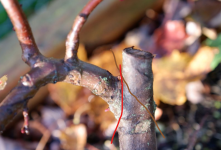The Warm Canuck
Chumono
I have this Red Maple that I'm planning on Air Layering at some point. I wondering what sequence of events do I need to take. I'd like to just cut the stump down and and air layer right below the wound in the spring, but I worry that I won't get root on the stump side as there will be little cambium below the stump. I could cut the stump down and wait for the it to heal, then air layer once the wound is healed, but again I don't know if I'll get roots below the wound. Or I cut the stump down and air layer all in the same go. I guess my main question is, will roots develop from healed wound cambium? and where would be the exact area to create my air layer cut to get the best result?







